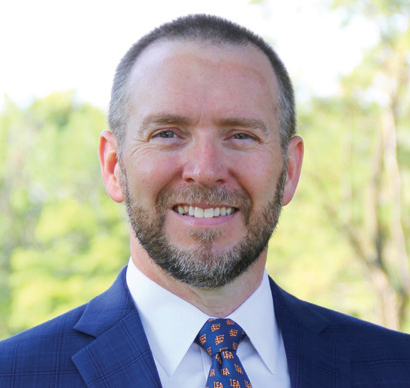 Garry Sloan is Director of Individual Philanthropy at Lake Forest Academy (LFA) in Lake Forest, Illinois. Established in 1857, LFA is an independent boarding school for grades 9-12. Its current student body represents 16 states and 33 countries. Sloan came to LFA in 2016 after serving as the Director of Major Gifts for the Colonial Williamsburg Foundation.
Garry Sloan is Director of Individual Philanthropy at Lake Forest Academy (LFA) in Lake Forest, Illinois. Established in 1857, LFA is an independent boarding school for grades 9-12. Its current student body represents 16 states and 33 countries. Sloan came to LFA in 2016 after serving as the Director of Major Gifts for the Colonial Williamsburg Foundation.
Give & Take: You are the “Director of Individual Philanthropy” at LFA. Tell me how your title came about.
Sloan: Throughout my career, there has been an ongoing conversation about how donors perceive titles, both positively and negatively. For instance, planned giving donors often don’t think of themselves as major givers. When I came to the Academy, my title was “Planned and Major Gifts Officer.” We learned that “Major” and “Officer” could be off-putting to some.
While our development office was going through an overall restructuring process, we landed on a title that we believed better reflected my position. Most importantly, it resonates with our donors and how they perceive their philanthropic relationship with the Academy. Since the change, I’ve had donors ask what my title means—which is welcomed—because it’s a way to start a conversation about structuring a gift that is meaningful to them personally.
G&T: What is one of your most memorable gifts?
Sloan: A memorable gift for me isn’t necessarily the largest—it’s one that comes out of a donor’s story and his or her relationship with LFA. I recently worked on a gift from the mother of an alumna who had faced a life-threatening illness while she was still a student. The mother was so grateful for the support and encouragement the LFA community gave her daughter that she established a fund for teacher development as a way of saying “thank you.”
G&T: How do you communicate the planned giving message to your donors?
Sloan: Our primary means is through a newsletter, The Bell, which we mail three times a year. When I came to LFA, there was a planned giving program in place, but it was described to me as “fallow.” Our goal with the newsletter program was to get the word out. The Bell has been incredibly helpful in both introducing donors to the concept of gift planning and also reminding them about the many wonderful ways they can support the Academy.
Our formula for the newsletter is simple. We always highlight a planned giving donor (our Sharpe editor interviews the donor and writes the story for us) and we focus on the basics—simple bequests, IRA and securities gifts, beneficiary designations, etc. We have also had several articles this year about the tax law changes.
Since 2016, we’ve had a 27% increase in our Richards & Tremain Society (LFA’s planned gift recognition society) and, from the response cards we’ve received back from The Bell, we’ve confirmed several more people who have made planned gifts we weren’t aware of before.
G&T: There’s something else you’ve received as a result of mailing The Bell. Tell me about that.
Sloan: Something we didn’t anticipate were the annual gifts we would receive. In our last fiscal year (2018), we received more than $65,000 in current gifts from those who received the newsletter.
G&T: What are some other ways you communicate the gift planning message?
Sloan: I always include a story in our school magazine, The Review, which typically details a realized planned gift and how it has had an impact. I also send e-messages to parents and alumni. As a small shop, the most important means of communicating the message is with face-to-face conversations. Having a more visible gift planning program through consistent broad-based communication efforts has enabled me to start those conversations more easily.
G&T: What’s some advice you received in your fundraising career that you would like to share?
Sloan: A former boss had a great quote that I find myself coming back to again and again with respect to “the ask.” He said, “It’s all in how you serve the eggs.” I can ask two donors for the same gift, but I will need to serve the “eggs” differently according to their preference. It’s important to approach these conversations strategically and know whether the donor wants their eggs scrambled or over easy. That knowledge comes from having a relationship with the donor. Relationships build trust and knowledge that inform your approach to donors, which is critical.
I prefer to think of my job as helping motivated donors achieve their philanthropic goals. When I meet with a donor, I like to ask some version of, “What would you most like to accomplish for LFA?” And, based on their answer, my next question is, “What if I could show you a way to make that possible?”
G&T: What has changed the most in fundraising in recent years?
Sloan: A few things. More and more donors are interested in structuring blended gifts that accomplish more than one objective. And even though tax benefits are not the primary driver for making a major or planned gift, tax considerations often come into play. The recent tax law changes have raised many questions in the industry and with donors that won’t be answered until after April. I’m also seeing donors placing more emphasis on transparency and accountability, and wanting more of a say in how their gifts are used. This can create particular challenges when raising funds for endowment.
What hasn’t changed is the importance of building and maintaining donor relationships. Though it may sound simple, that’s the key to long-term fundraising success. ■

